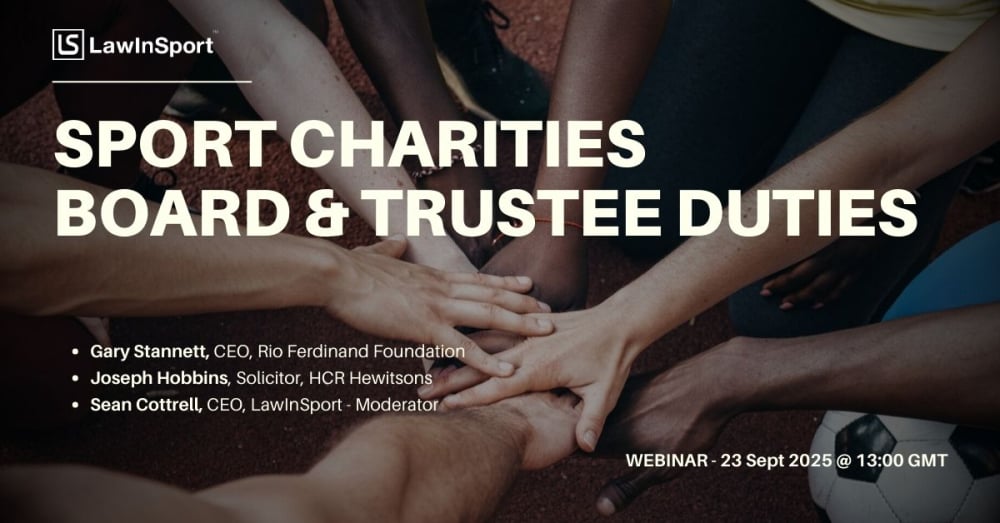Sartorial Sport: How Rio 2016 brought the sports and fashion worlds closer together
Thursday, 29 September 2016This article was originally written for and published by the Sheridans Sports Group in
"The Sheridans BackPage - September 2016".
Introduction
The fashion industry is increasingly embracing collaborations of a sporting kind involving link ups between athletes and sports brands alike. In light of the often complex nature of the rights and obligations of the parties involved, such collaborations require clear structure and considered contracts.
This month’s BackPage looks at how the success of Rio 2016, particularly for Team GB, could lead to this trend continuing to gather pace.
During the Olympic Games, the focus of the international fashion press temporarily shifted from the usual catwalk waifs to the world’s leading athletes. In its August issue, British Vogue tastefully shot British boxer Nicola Adams in an editorial which remained faithful to Nicola’s sporting profile and didn’t attempt to adapt her athletic exterior into the delicate looks often adopted by the magazine. Vogue is amongst many global fashion publications seizing upon the sporting trend.
As health, wellbeing and fitness becomes an increasing focus for the general public, so too do the profiles of the professional athletes who advocate those qualities. The physique and dedication of those who compete in the Olympic Games is aspirational for many. The followings of those athletes are also attractive to the fashion industry particularly at a time where athleisure is trending from the catwalk to the high street. There is a real appetite for sports from the fashion industry and its consumers.
Examples
As fashion publications have focused on athletes, so too have some fashion brands when choosing brand ambassadors. Olympic champion Sir Bradley Wiggins and Fred Perry is a prime example of such endorsement.
Historically, footballers have led the way in taking up fashion deals. David Beckham is perhaps an obvious example of a sportsman who has successfully collaborated with various fashion brands, including Belstaff and H&M.
Similarly tennis has also had a strong affiliation with the fashion world. Andy Murray opted some years ago to wear kit made by Fred Perry while Novak Djokovic continues to work with Japanese retailer Uniqlo. Off the court, Rafael Nadal has worked with designer Tommy Hilfiger. Ralph Lauren, a brand accustomed to the sporting world, has been the official designer of Wimbledon apparel since 2006 notably featuring its iconic blazer. It also later went on to become the official outfitter for US Olympic athletes including in this year’s games.
Fashion designers are also embracing collaborations with sports brands to create apparel for athletes. French favourite Hermes dressed France’s equestrian team for the 2012 games. Stella McCartney, who also contributed in 2012, has continued to work with Adidas to create Team GB’s innovative kit. British Vogue were again quick off the mark to celebrate this collaboration. We are likely to see more collaborations of this kind particularly in light of the rapid growth of innovation for textiles which improve performance and meet the demand for aesthetic appeal.
The Legals
Athletes entering into a fashion brand deal need to be careful that the terms do not conflict with other commitments; principally that it will not impact on their professional obligations or performance. The terms also need to allow flexibility so that the athlete is not unduly restricted and can bring the relationship to an end if it isn't working. For these reasons, obligations on the athlete and terms concerning exclusivity and termination need to be carefully considered and drafted.
Where sporting and fashion brands are working together, it is important for the parties to establish at an early stage a structure for ownership of the brand and innovation resulting from any collaboration. Where there is innovation, there is likely to be a range of intellectual property rights issues which need to be considered at the outset, and in particular protection of those rights. Early discussions protected by a confidentiality agreement will allow the brands to explore these areas, openly exchange ideas and hopefully flag issues to prevent disputes at a later stage.
Conclusion
Rio 2016 has boosted the profiles of many athletes globally. In its wake there will undoubtedly be increasing opportunities within the fashion industry not only for athletes to enhance their personal brand, but also for future sporting collaborations more generally.




